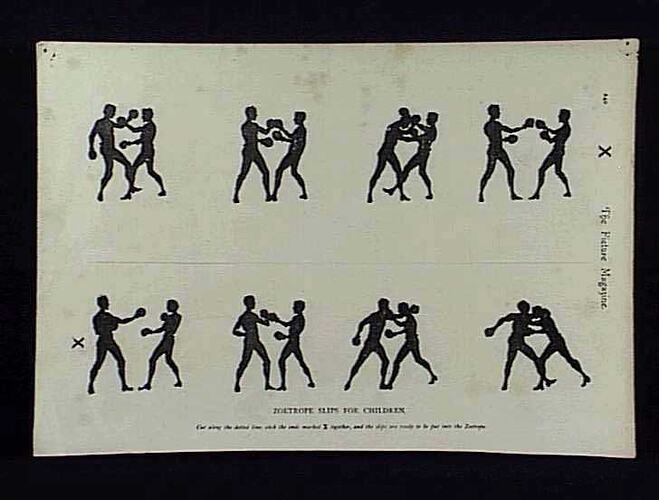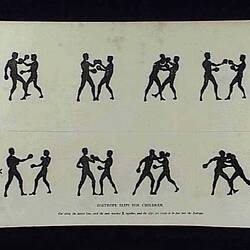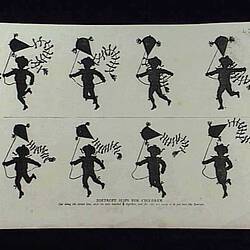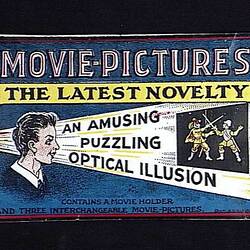Summary
Alternative Name(s): Zoetrope Band
Two double sided paper sheets from 'The Picture Magazine', each of which depicts a series of 8 slightly different still images. These images were designed to be cut out and pasted together to make 4 strips of static animation images, designed to be viewed through a zoetrope.
A zoetrope comprises a cylindrical shade with individual slits spaced around the circumference to form viewing slits. Beneath the slits, on the inner surface of the cylinder, are placed the zoetrope strips. Many zoetropes would also have featured a central holder for a candle to allow illumination of the images. To view the animation the cylinder is spun with the user looking through the slits at the pictures on the opposite side of the cylinder's interior. The scanning of the slits keeps the pictures from simply blurring together, so that the user sees a rapid succession of images producing the illusion of motion, the equivalent of a motion picture.
The zoetrope was part of a suite of popular philosophical or optical toys created in the 19th century. Like the zoetrope, most attempted to create the illusion of movement using a series of static images. The height of the zoetrope's popularity was during the mid 19th century. These later cutouts were designed for the use of children.
These zoetrope strip, magazine cutouts are part of the Francis Collection of pre-cinematic apparatus and ephemera, acquired by the Australian and Victorian Governments in 1975. David Francis was the curator of the National Film and Sound Archive of the British Film Institute as well as being a co-founder of the Museum of the Moving Image in London, which was operational between 1988 and 1999.
Description of Content
Zoetrope slips for children. Pub. In "Picture" magazine about 1900.
Physical Description
Two double sided paper sheets with black animated sequences on either side.
More Information
-
Collection Names
-
Collecting Areas
-
Acquisition Information
Loan & Subsequent Donation from Australian Film Institute (AFI), Mr David Francis, by Nov 1990
-
Collector
Mr David Francis, London, Middlesex, England, Great Britain, 1990
-
Format
Zoetrope Strip, Black & White
-
Language
English
-
Inscriptions
Text including 'ZOETROPE SLIPS FOR CHILDREN'.
-
Classification
-
Category
-
Discipline
-
Type of item
-
Keywords
Animation, Daedala, Optical Illusion Devices, Pre-Cinema Moving Images, Zoetrope Strips, Zoetropes






